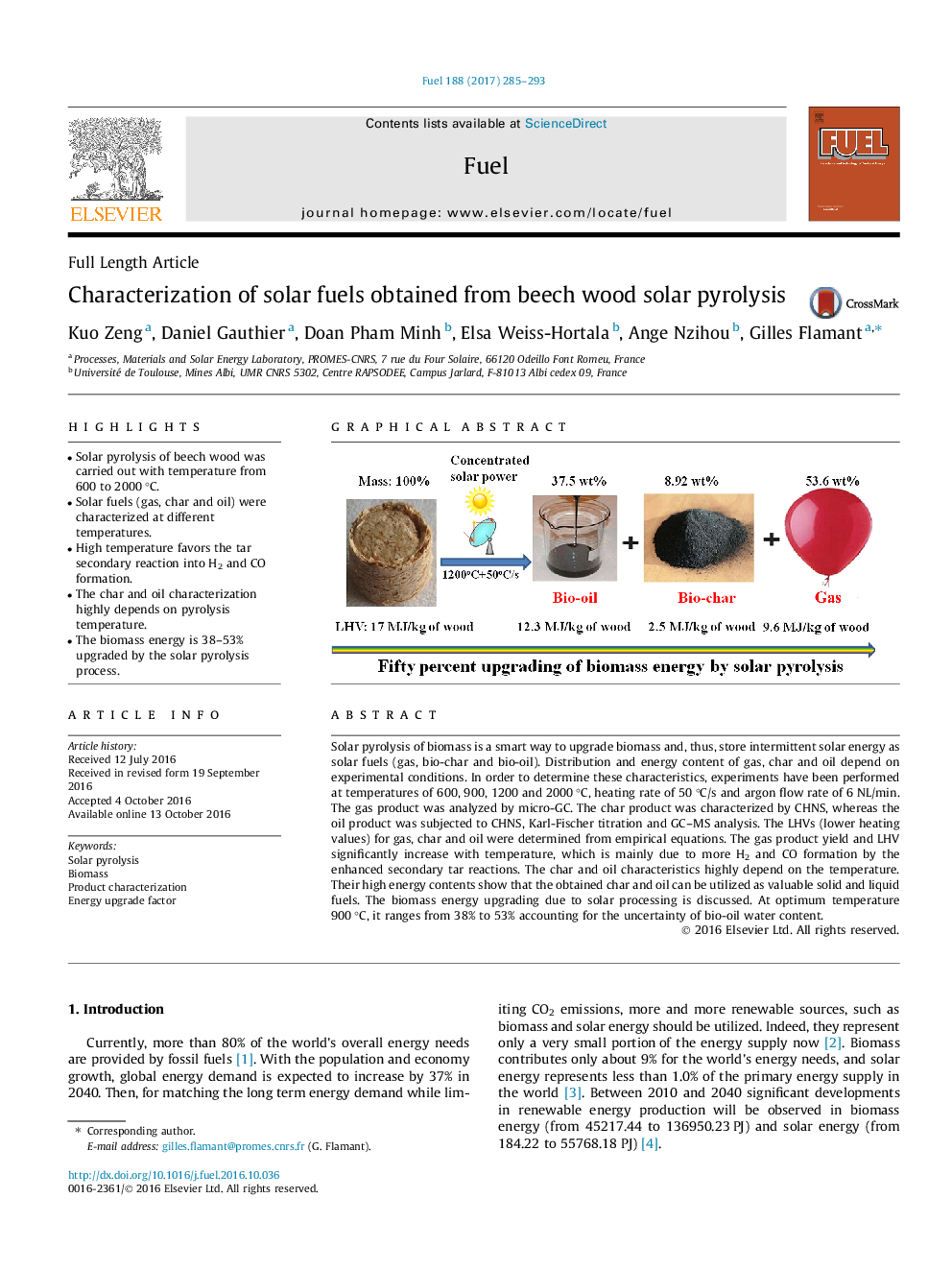| Article ID | Journal | Published Year | Pages | File Type |
|---|---|---|---|---|
| 6475788 | Fuel | 2017 | 9 Pages |
â¢Solar pyrolysis of beech wood was carried out with temperature from 600 to 2000 °C.â¢Solar fuels (gas, char and oil) were characterized at different temperatures.â¢High temperature favors the tar secondary reaction into H2 and CO formation.â¢The char and oil characterization highly depends on pyrolysis temperature.â¢The biomass energy is 38-53% upgraded by the solar pyrolysis process.
Solar pyrolysis of biomass is a smart way to upgrade biomass and, thus, store intermittent solar energy as solar fuels (gas, bio-char and bio-oil). Distribution and energy content of gas, char and oil depend on experimental conditions. In order to determine these characteristics, experiments have been performed at temperatures of 600, 900, 1200 and 2000 °C, heating rate of 50 °C/s and argon flow rate of 6 NL/min. The gas product was analyzed by micro-GC. The char product was characterized by CHNS, whereas the oil product was subjected to CHNS, Karl-Fischer titration and GC-MS analysis. The LHVs (lower heating values) for gas, char and oil were determined from empirical equations. The gas product yield and LHV significantly increase with temperature, which is mainly due to more H2 and CO formation by the enhanced secondary tar reactions. The char and oil characteristics highly depend on the temperature. Their high energy contents show that the obtained char and oil can be utilized as valuable solid and liquid fuels. The biomass energy upgrading due to solar processing is discussed. At optimum temperature 900 °C, it ranges from 38% to 53% accounting for the uncertainty of bio-oil water content.
Graphical abstractDownload high-res image (120KB)Download full-size image
